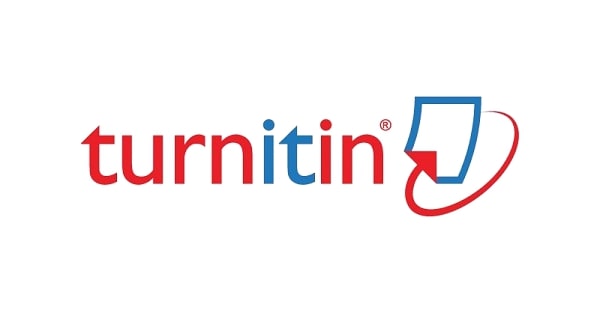The Effect of Profitability, Leverage, Fixed Asset Intensity, Company Size, and Company Age Partially on Tax Avoindance
DOI:
https://doi.org/10.55732/unu.gnk.2024.06.1.8Keywords:
Profitability, Leverage, Fixed Asset Intensity, Company Size, Company Age, and Tax AvoidanceAbstract
This study aims to analyze the effect of profitability, leverage, fixed asset intensity, company size, and company age partially on tax avoidance. This research is a type of quantitative research. The research population is food and beverage subsector companies listed on the Indonesia Stock Exchange (IDX) for the 2017-2021 period. The sample of this study was 33 companies selected by purposive sampling method. While the data analysis method used is multiple linear regression analysis with normality test steps, multicollinearity test, heteroscedasticity test, autocorrelation test, linear regression test, and hypothesis testing. Based on this research, the following results were obtained: 1) profitability has a positive and significant effect on tax avoidance. 2) leverage has no effect on tax avoidance. 3) fixed asset intensity has no effect on tax avoidance. 4) company size has a positive and significant effect on tax avoidance. 5) company age has a negative and significant effect on tax avoidance.
References
Darma, S. S. (2021). Pengaruh Kompensasi Manajemen, Umur Perusahaan Dan Pertumbuhan Penjualan Terhadap Penghindaran Pajak. Jurnal Disrupsi Bisnis, 4(2), 118. https://doi.org/10.32493/drb.v4i2.9551
Dharmayatri, N. W. S., & Wiratmaja, I. D. N. (2021). Return On Assets, Leverage, Company Size dan Tax Avoidance. E-Jurnal Akuntansi, 31(9), 2301. https://doi.org/10.24843/eja.2021.v31.i09.p12
Hapsari Ardianti, P. N. (2019). Profitabilitas, Leverage, dan Komite Audit Pada Tax Avoidance. E-Jurnal Akuntansi, 2020. https://doi.org/10.24843/eja.2019.v26.i03.p13
Jamaludin, A. (2020). PENGARUH PROFITABILITAS (ROA), LEVERAGE (LTDER) DAN INTENSITAS AKTIVA TETAP TERHADAP PENGHINDARAN PAJAK (TAX AVOIDANCE) PADA PERUSAHAAN SUBSEKTOR MAKANAN DAN MINUMAN YANG TERDAFTAR DI BEI PERIODE 2015-2017. Eqien: Jurnal Ekonomi Dan Bisnis, 7(1), 85–92. https://doi.org/10.34308/eqien.v7i1.120
Julianti, & Kanti, A. (2019). FAKTOR-FAKTOR YANG MEMPENGARUHI TAX AVOIDANCE PADA PERUSAHAAN MANUFAKTUR DI BURSA EFEK INDONESIA. 3, 5–10.
Kismanah, I., Masitoh Fakultas Ekonomi dan Bisnis, S., & Tangerang, M. (2018). PROFITABILITY, LEVERAGE, SIZE OF COMPANY TOWARDS TAX AVOIDANCE. Jurnal Ilmiah Akuntansi Fakultas Ekonomi, 4(1), 29–36. https://journal.unpak.ac.id/index.php/jiafe
Langi, J. T. G., Kalangi, L., & Warongan, J. D. L. (2023). Pengaruh Capital Intensity, Leverage, Sales Growth, Dan Market-To-Book-Ratio Terhadap Tax Avoidance Pada Perusahaan Sektor Kesehatan Di Indonesia. Jurnal Riset Akuntansi Dan Auditing "GOODWILL, 14(1), 97–112.
Lia, A., & Wibowo, S. (2022). Prosiding: Pengaruh Intensitas Aset Tetap, Likuiditas Dan Pertumbuhan Penjualan Terhadap Penghindaran Pajak (Studi Kasus Pada Perusahaan Jasa Keuangan Subsektor Perbankan Yang Terdaftar Di Bursa Efek Indonesia Tahun 2016–2020) (Vol. 1, Issue 2).
Muda, I., Abubakar, E., Akuntansi, M., & Ekonomi dan Bisnis, F. (2020). Pengaruh Ukuran Perusahaan, Profitabilitas, Leverage, dan Manajemen Laba terhadap Penghindaran Pajak Dimoderasi oleh Political Connection. Jurnal Riset Akuntansi Dan Keuangan, 8(2), 375–392. https://doi.org/10.17509/jrak.v8i2.22807
Rahmawati, E., Nurlaela, S., & Samrotun, Y. C. (2021). Determinasi Profitabilitas, Leverage, Ukuran Perusahaan, Intensitas Modal dan Umur Perusahaan terhadap Tax Avoidance. Ekonomis: Journal of Economics and Business, 5(1), 158. https://doi.org/10.33087/ekonomis.v5i1.206
Roulani, G. J., Kalangi, L., & Pinatik, S. (2020). Jurnal 5. In Indonesia Accounting Journal (Vol. 2, Issue 2, p. 66).
Satu, O., Stie, (, & Pignatelli Surakarta, S. (2021). THE EFFECT OF EXECUTIVE COMPENSATION, PROFITABILITY, LEVERAGE, CAPITAL INTENSITY AND COMPANY AGE ON TAX AVOIDANCE. In Media Akuntansi | (Vol. 33, Issue 02).
Stephanie, D., & Herijawati, E. (2022). Pengaruh Pertumbuhan Penjualan, Profitabilitas, dan Intensitas Aset Tetap Terhadap Penghindaran Pajak.
Sulistiyanti, U., & Nugraha, R. A. Z. (2019). CORPORATE OWNERSHIP, KARAKTERISTIK EKSEKUTIF, DAN INTENSITAS ASET TETAP TERHADAP PENGHINDARAN PAJAK. Jurnal Profita, 12(3), 361. https://doi.org/10.22441/profita.2019.v12.03.001
Tebiono, J. N., & Sukanda, I. B. N. (2021). Faktor-Faktor Yang Mempengaruhi Tax Avoidance Pada Perusahaan Manufaktur Yang Terdaftar Di Bursa Efek Indonesia. Jurnal Literasi Akuntansi, 2(2), 129–142. https://doi.org/10.55587/jla.v2i2.52
Winarto, H., & Oktaria, D. (2022). Pengaruh Intensitas Aset Tetap Dan Leverage Terhadap Tax Avoidance Pada Perusahaan Manufaktur Sektor Industri Barang Konsumsi Yang Terdaftar Di Bursa Efek Indonesia Tahun 2016 – 2019. Jurnal Akuntansi Dan Bisnis Krisnadwipayana, 9(2), 676. https://doi.org/10.35137/jabk.v9i2.686
Yopie, S., & Santo, S. (2023). Pengaruh Tata Kelola Perusahaan Terhadap Penghindaran Pajak Pada Perusahaan Lq45 Di Bursa Efek Indonesia. Jesya, 6(1), 606–624. https://doi.org/10.36778/jesya.v6i1.963
Downloads
Published
Issue
Section
License
Copyright (c) 2024 GREENOMIKA

This work is licensed under a Creative Commons Attribution-NonCommercial 4.0 International License.
Authors who publish with this journal agree to the following terms:
Authors retain copyright and grant the journal right of first publication with the work simultaneously licensed under a Creative Commons Attribution License that allows others to share the work with an acknowledgement of the work's authorship and initial publication in this journal.
Authors are able to enter into separate, additional contractual arrangements for the non-exclusive distribution of the journal's published version of the work (e.g., post it to an institutional repository or publish it in a book), with an acknowledgement of its initial publication in this journal.
Authors are permitted and encouraged to post their work online (e.g., in institutional repositories or on their website) prior to and during the submission process, as it can lead to productive exchanges, as well as earlier and greater citation of published work (See the Effect of Open Access).















